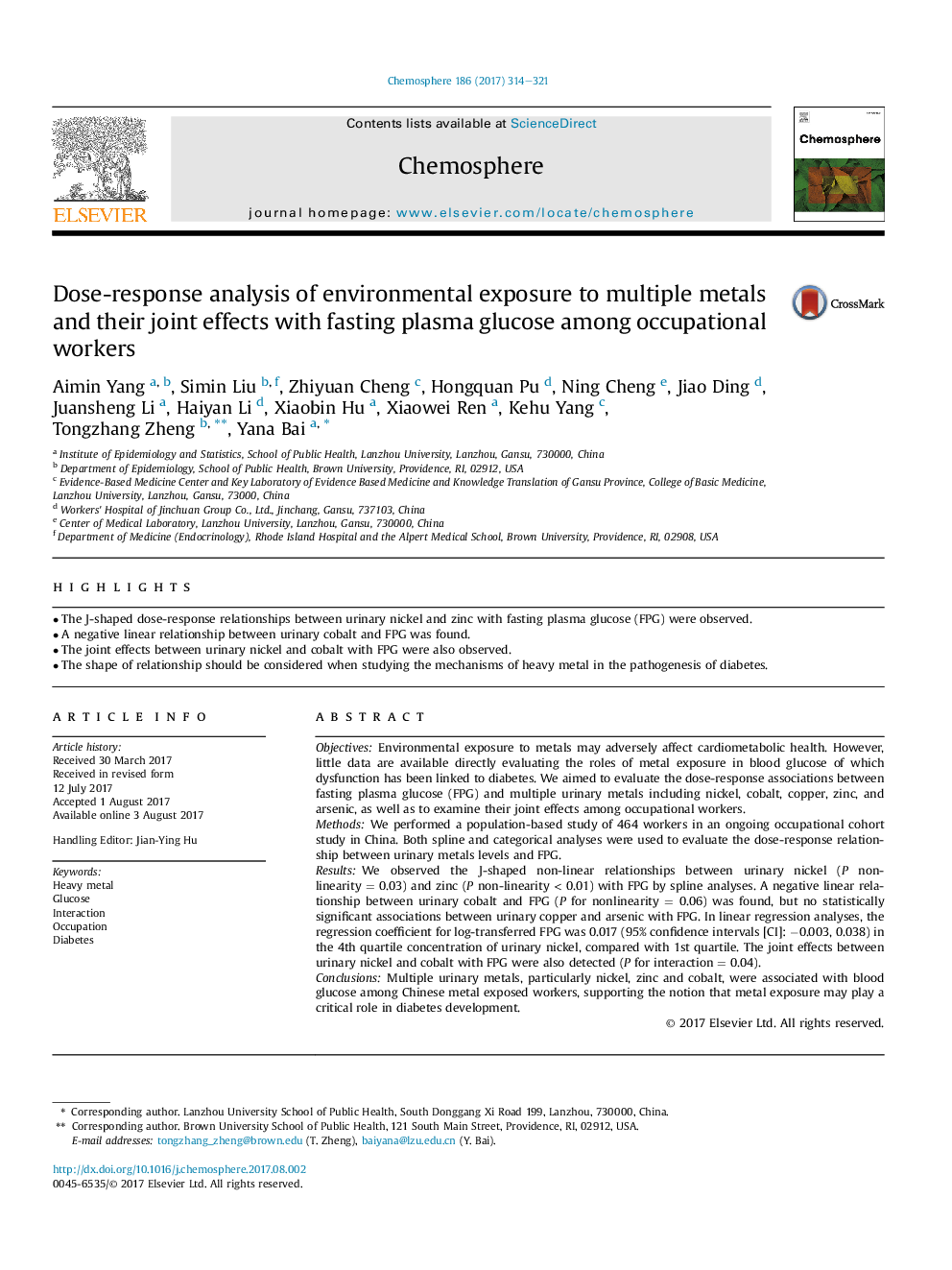| کد مقاله | کد نشریه | سال انتشار | مقاله انگلیسی | نسخه تمام متن |
|---|---|---|---|---|
| 5746020 | 1618785 | 2017 | 8 صفحه PDF | دانلود رایگان |
- The J-shaped dose-response relationships between urinary nickel and zinc with fasting plasma glucose (FPG) were observed.
- A negative linear relationship between urinary cobalt and FPG was found.
- The joint effects between urinary nickel and cobalt with FPG were also observed.
- The shape of relationship should be considered when studying the mechanisms of heavy metal in the pathogenesis of diabetes.
ObjectivesEnvironmental exposure to metals may adversely affect cardiometabolic health. However, little data are available directly evaluating the roles of metal exposure in blood glucose of which dysfunction has been linked to diabetes. We aimed to evaluate the dose-response associations between fasting plasma glucose (FPG) and multiple urinary metals including nickel, cobalt, copper, zinc, and arsenic, as well as to examine their joint effects among occupational workers.MethodsWe performed a population-based study of 464 workers in an ongoing occupational cohort study in China. Both spline and categorical analyses were used to evaluate the dose-response relationship between urinary metals levels and FPG.ResultsWe observed the J-shaped non-linear relationships between urinary nickel (P non-linearity = 0.03) and zinc (P non-linearity < 0.01) with FPG by spline analyses. A negative linear relationship between urinary cobalt and FPG (P for nonlinearity = 0.06) was found, but no statistically significant associations between urinary copper and arsenic with FPG. In linear regression analyses, the regression coefficient for log-transferred FPG was 0.017 (95% confidence intervals [CI]: â0.003, 0.038) in the 4th quartile concentration of urinary nickel, compared with 1st quartile. The joint effects between urinary nickel and cobalt with FPG were also detected (P for interaction = 0.04).ConclusionsMultiple urinary metals, particularly nickel, zinc and cobalt, were associated with blood glucose among Chinese metal exposed workers, supporting the notion that metal exposure may play a critical role in diabetes development.
Journal: Chemosphere - Volume 186, November 2017, Pages 314-321
